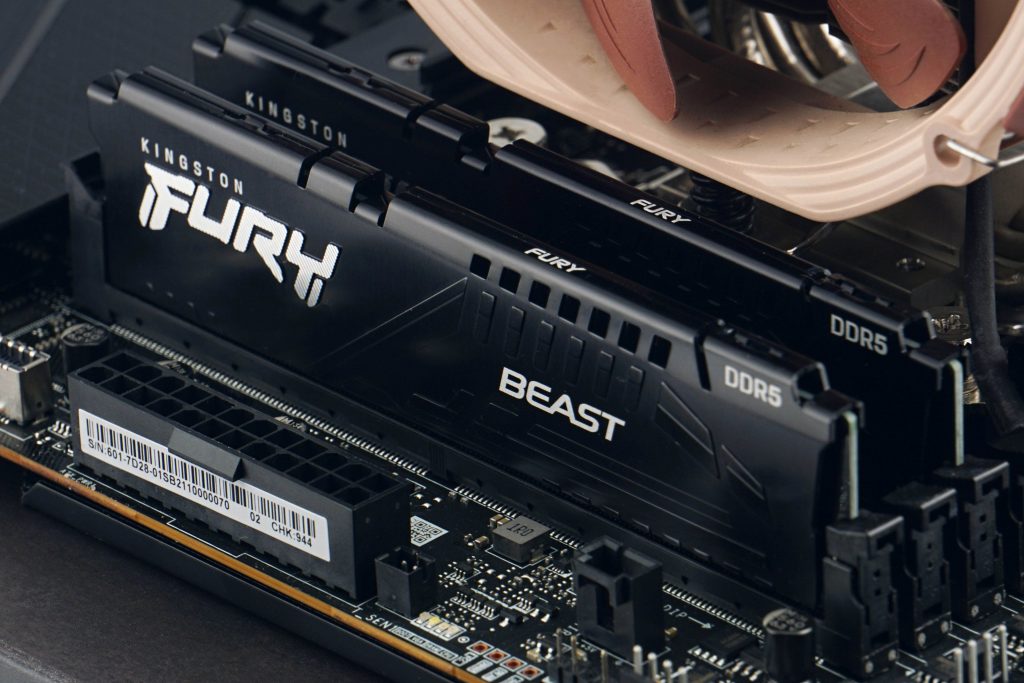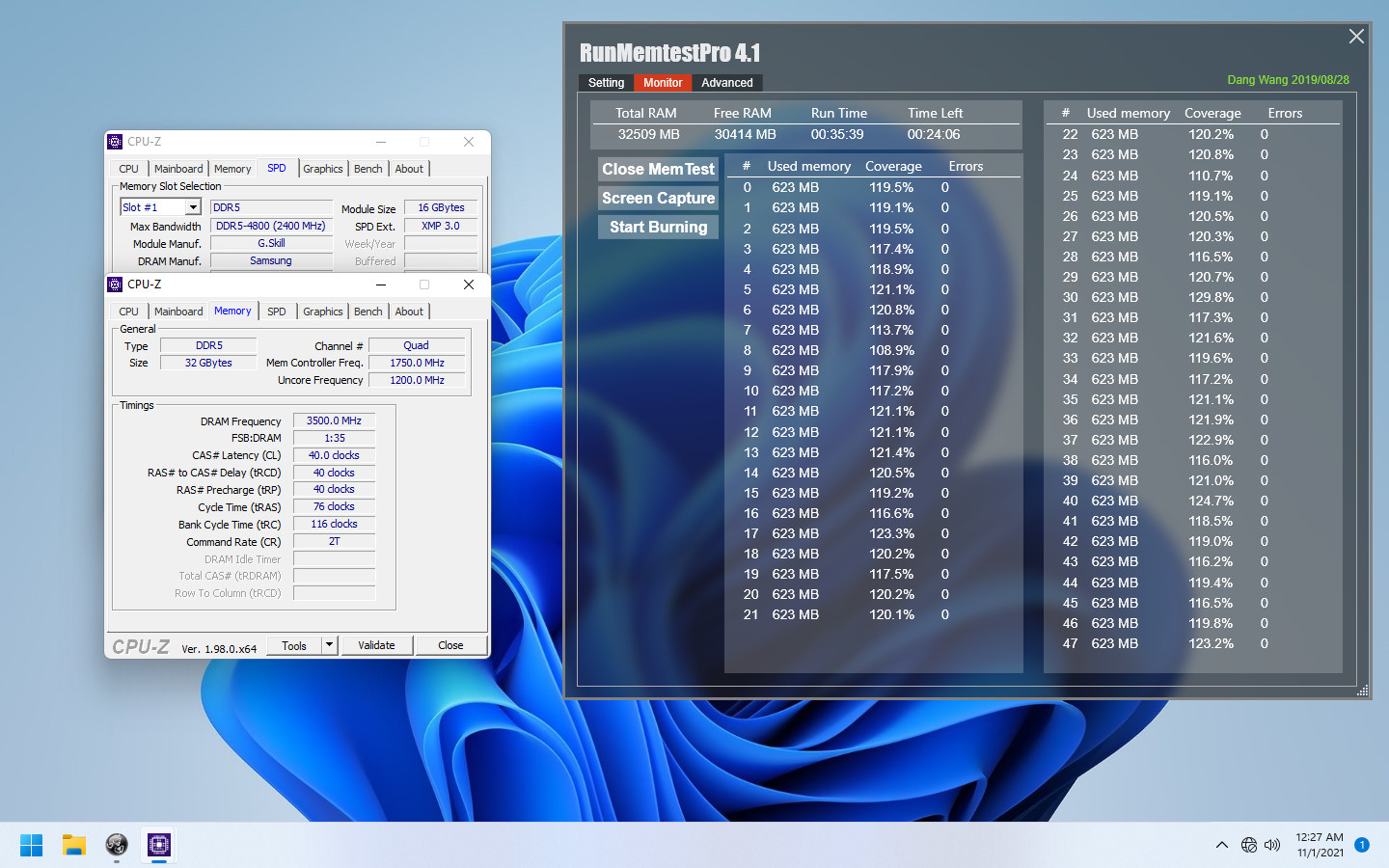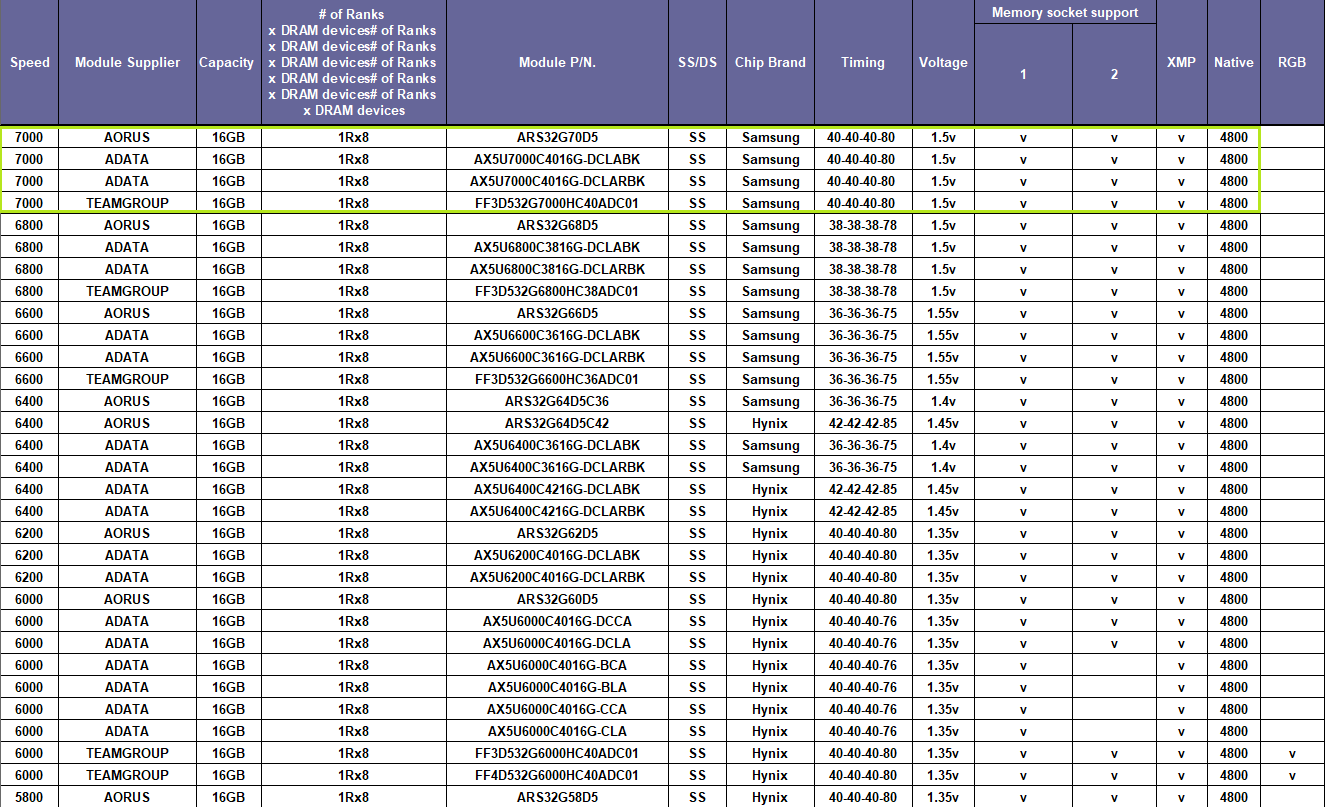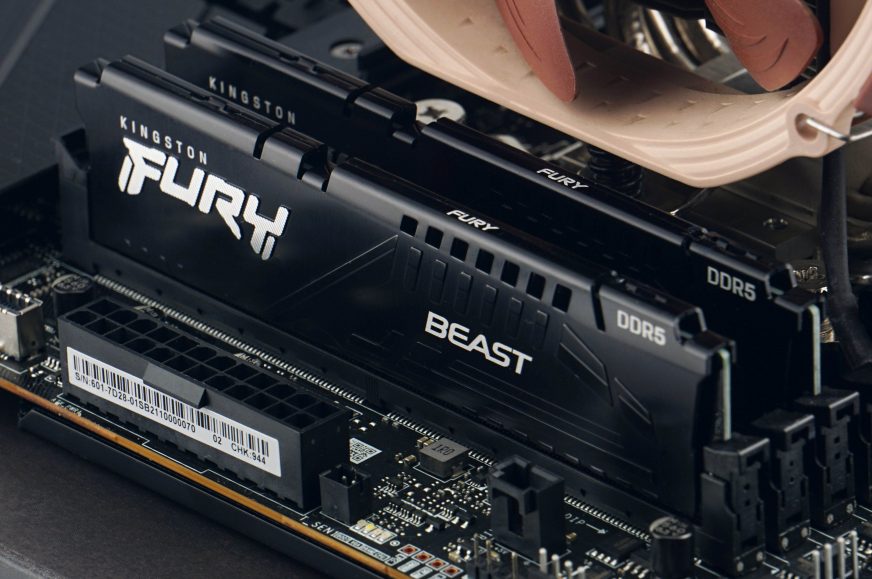Memory modules running at DDR5-6666 and DRR5-7000 have already been validated on Z690 mainboards
Last week saw the reviews and launch of Alder Lake CPU and LGA 1700 mainboards. A big new feature of this platform is DDR5 memory allowing for a higher bandwidth, albeit potentially suffering from higher initial prices. Following the premiere of Alder Lake, we took a look at what’s the fastest available memory modules you can get. It looks like memory modules running on 7000MHz for PCs could be here sooner than later.
Officially Alder Lake supports DDR5 with the effective (not actual) frequency of 4800 MHz (or “DDR5-4800”), however this includes limitations. This performance is officially guaranteed only on mainboards providing merely two DIMM slots, not four (official frequencies for four DIMM slots, four installed modules, or dual-rank have been tackled in this arrticle).
Such limitations only apply to official support, without overclocking. DDR5 memory will also use the factory overclock system with XMP profiles (now called XMP 3.0), therefore the memory can be used at significantly higher frequencies by toggling the respective XMP profile, regardless of the rather conservative official stats.
Intel has a list of DDR5 modules which already have received an XMP 3.0 certification, on their webpage. This can be currently viewed as a rough guideline, for it is still in the beginnings and will likely fill up in time, currently listing only a small number of modules limited to G.Skill, Corsair and Kingston. This surely is not definite and further modules are likely undergoing certification now (all present items have only been certified during October).

Up to 5200 MHz without changing the voltage
The list includes some DDR5-4800 and DDR5-5200 modules interesting for one reason: some are capable of maintaining the low default voltage of 1,1 V – the DDR5-5200s partly require 1,25 V, but some modules can do with only 1,1 V.
However if we are interested in bandwidth, the clocks will be relevant. In this category Intel currently lists G.Skill memory modules, running on 6600 and 6666 MHz as the fastest, although with a voltage of 1,35 V. This has been a raised voltage level already within the DDR4 generation, which was starting with higher voltage than DDR5: 1.2 V while DDR5 defaults to 1.1 V, which makes a raise to 1.35 V more substantial than before. The memory module type in question is the G.Skill Trident Z5 in a 2x16GB kit (variants F5-6600U4040f16GX2-TZ5RS and F5-6666U4040f16GX2-TZ5RS).
As you can see, the timings turn out to be relatively loose. What is positive though, is that the high clocked modules keep the same CL40-40-40-76 and CL40-40-40-80, since the resulting latencies actually improve with higher frequencies. The tightest timings, when counted by cycles, are presently at 4800 MHz with Corsair modules with CL34-35-35-69, but CL40-40-40-76 with 6666MHz modules should come out significantly better.
Other faster modules, not yet included in Intel’s list, should be on the way. For example: G.Skill has announced the DDR5-6400 memory module from the Trident Z5 series, which should have a slightly decreased bandwidth, but lower latencies – CL36-36-36-76. DRAM chips by Samsung should be employed.
However, these faster modules will not necessarily be available directly after the release of Alder Lake. G.Skill currently still lists versions with 5200 and 5600 MHz clocks only (we got to borrow DDR5-5200 memory modules for our review). Hopefully the introduction of the faster modules is not far away.

Hint: Alder Lake testing rig: MEG Z690 Unify and DDR5 memory
Temporary maximum at 7000 MHz?
Higher performance are to follow a bit later. DDR5-7000 currently seems to be the fastest DDR5 incoming. Such memory modules have been announced by G.Skill as a part of the Trident Z5 series, more specifically it should be DDR5-7000 memory modules with CL40-40-40-76 timings. Unfortunately, the voltage has not been stated yet, it is possible that it might exceed 1,4 V.
It likely will take some time for this version to become available for sale, G.Skill has only just reported that the memory modules have passed a stability test (RunMemtestPro 4.1) on the Z690 platform.

But this is not the only such kit, that might soon arrive on the market. Gigabyte already has added some other brands of DDR5-7000 supporting memory modules to its qualified vendor list for Alder Lake mainboards. These brands are the Taiwanese Team Group and Adata as well as Gigabyte’s own modules under the Aorus brand. The mentioned list for Z690 Aorus Tachyon mainboard can be seen below.
This should be three or four kits with a 2×16 GB capacity – Aorus Memory ARS32G70D5, kits Adata AX5U7000C4016G-DCLABK and AX5U7000C4016G-DCLARBK and a Team Group kit labelled FF3D532G7000HC40ADC01. So far it seems that none of the listed companies have the respective memory modules listed on their websites, possibly waiting for the release of Alder Lake.

All these modules are based on Samsung chips and have the same settings – DDR5-7000, timings CL40-40-40-80 and unfortunately a rather high voltage of 1,5 V. At such levels it’s somewhat of a question if the voltage is fully safe for long term usage. Even with DDR4 the overclocked modules usually peaked at only 1,35 V and 1,5 V was quite an exception (and one only used in some extreme models). Nevertheless the mentioned 7000MHz modules by G.Skill might also resort to pumping the same level of voltage into their chips.
It might take awhile until these faster versions of DDR5 modules will actually reach the market. But the fact that Gigabyte has already tested them gives hope that they are coming in much less than a year.
Sources: Intel, Tom’s Hardware, Gigabyte, G.Skill
Jan Olšan, editor for Cnews.cz
⠀
- Contents
- Memory modules running at DDR5-6666 and DRR5-7000 have already been validated on Z690 mainboards








